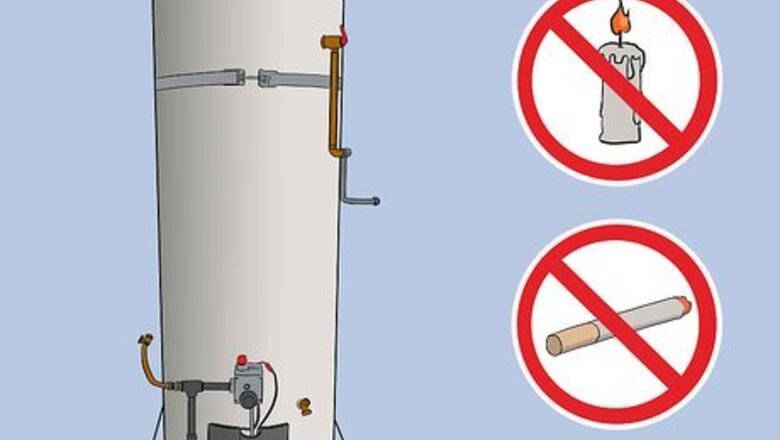
views
Adjusting a Gas Water Heater
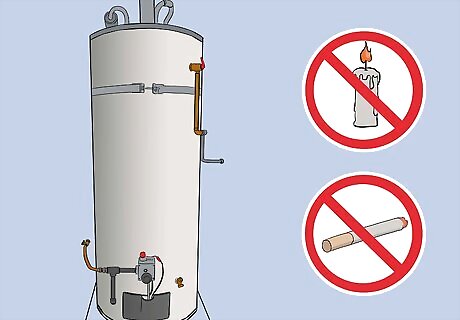
Put out any other open flames before adjusting the gas water heater. Natural gas is flammable and, while you should not come in direct contact with the gas, safe is better than sorry. Avoid using candles, cigarettes, or other open flames in the home while you're adjusting the water heater. You do not need to turn off the gas while adjusting the water temperature.
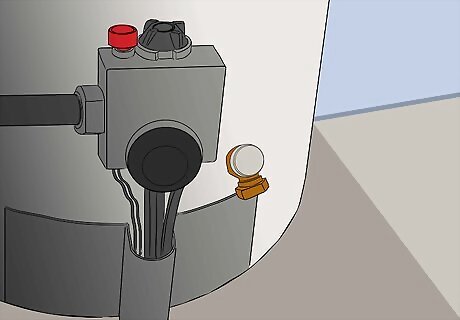
Locate the dial on the front of the water heater. This is the gas control valve. It is usually a black or red knob with 2 sides: warm and hot. In some cases, it might also have notches on the side to clearly mark these temperature options.
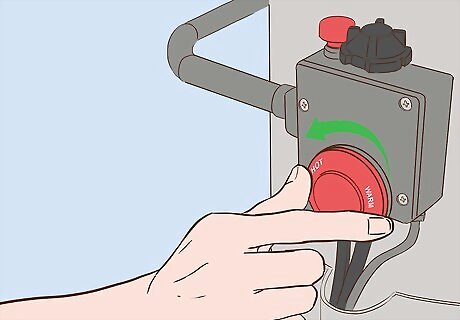
Twist the dial from the warm to the hot side. Do not turn the dial completely to hot. First, move it slightly towards hot from where it was before. If the temperature is moved completely to hot, the water may scald your hand. You can always move it further towards hot later on, if needed.
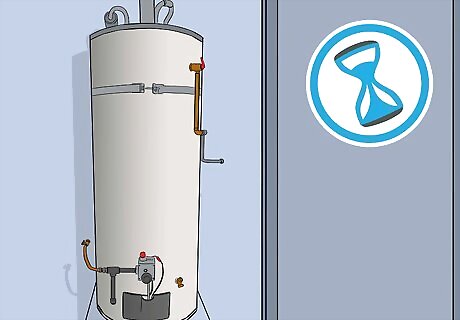
Wait 3 hours, then check the water temperature. Wait at least 3 hours before you check the water temperature again so it has time to heat. If the water temperature is still too low, or it feels too cool, adjust the gas control valve again. Avoid raising the temperature above 120 °F (49 °C) to prevent serious burns.
Turning Up an Electric Water Heater
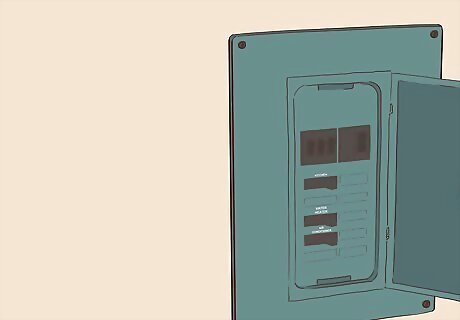
Turn off the water heater circuit breakers. Locate your home's circuit board at the electrical box. Because most water heaters use about 240 Volts of electricity, you should need to switch off 2 breakers. Consult the location sheet on the inside of the panel for details—if they are unlisted, turn off all of the panels to be safe. Never adjust the electric water heater without turning off the circuit breakers. To prevent electrocution, contact an electrician if you're not sure how to turn off the breakers.
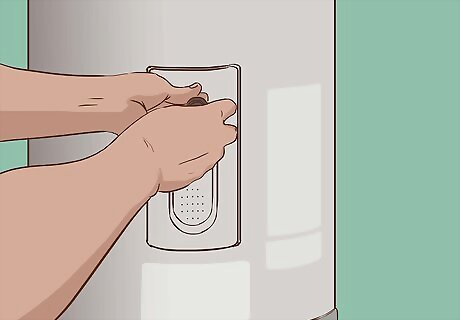
Remove the heater's access panels. The access panel(s) should look like rectangular boxes on the front of the water heater. Water panels have either single or double access panels, so pry open 1 or both to reach the panel's inner controls. Most panels do not need a screwdriver to be opened. Your hands should be enough.
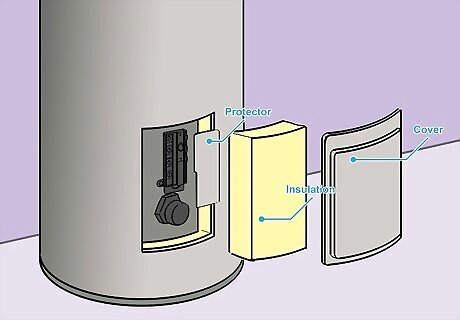
Remove the insulation to find the thermostat. You should notice a thin padding of insulation between the thermostat and the access panels. Take out all of the insulation to get a clearer look at the thermostat and raise the temperature as needed. Store the insulation somewhere safe—it will need to go back in the water heater to keep the thermostat temperature accurate.
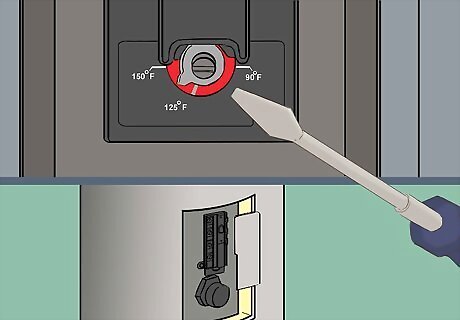
Adjust the thermostat to a higher temperature. Most thermostats are turned via a screw in the middle. Place a flat tip screwdriver into the screw and turn it several notches higher. Raise the thermostat temperature no higher than 120 °F (49 °C) to prevent burns. The thermostat should show temperatures from about 90 °F (32 °C) to 150 °F (66 °C), though 120 °F (49 °C) is the recommended maximum. Even if there are 2 panels, there should only be 1 thermostat. The number of panels more has to do with the water heater's design, as both panels should open up to the same thermostat.
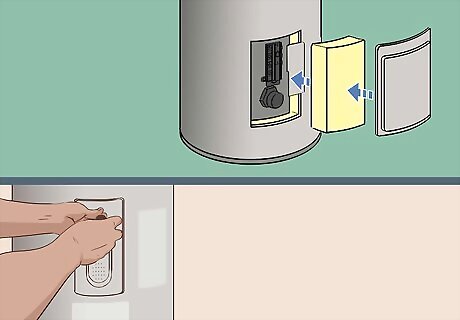
Close up the panels and wait to test the water. Put the insulation back into the heater and close 1 or both panels. When you're ready to check the water temperature, turn the power back on. Wait at least 3 hours before checking the water and evaluate: if it still reads or feels too low, adjust the temperature again.
Checking Your Water Temperature
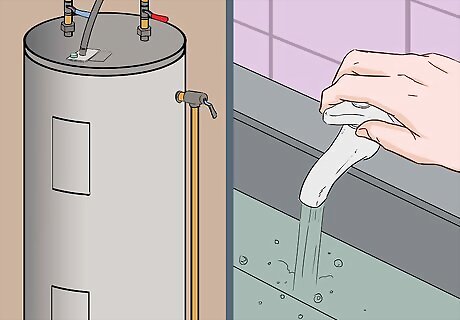
Run the hot water for 3-5 minutes. Choose the sink nearest to your hot water heater and let it run for at least 3 minutes. For the first few minutes, any water running out of the sink will have already been in the pipes. It needs to clear out before you test the water heater so you can get an accurate reading.
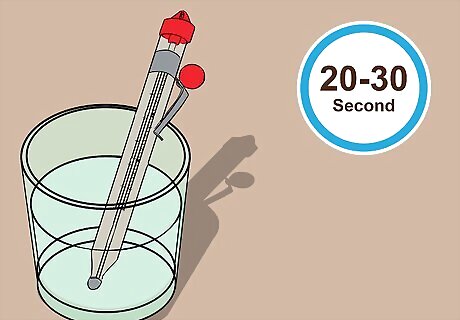
Use a candy or cooking thermometer to test the water temperature. Put the water in a bowl or cup and take its temperature immediately. Leave the thermometer in the water for at least 20-30 seconds to get a trustworthy reading.
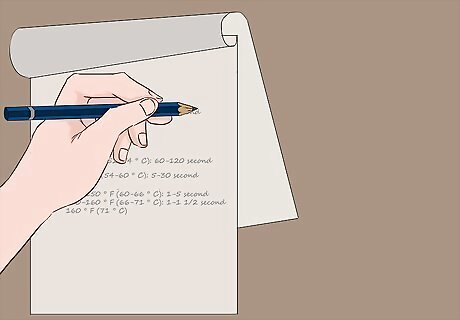
Record the temperature number. While cold water is a problem, you also don't want your water temperature to be too hot. If it reaches anywhere above 120 °F (49 °C), you run the risk of sustaining burns. Consult the following numbers to see the relationship between temperature and how long it will take to produce serious burns: 120 °F (49 °C): 5+ minutes 125–130 °F (52–54 °C): 60-120 seconds 130–140 °F (54–60 °C): 5-30 seconds 140–150 °F (60–66 °C): 1-5 seconds 150–160 °F (66–71 °C): 1-1 1/2 seconds 160 °F (71 °C) or above: Immediately
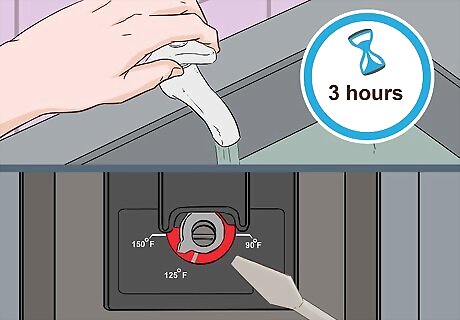
Check again in about 3 hours, if needed. If the reading is too low or too high, re-adjust the water heater as needed and check the temperature again in 3 hours. The water heater will need time to change its internal temperature and warm or cool the water to the correct temperature.




















Comments
0 comment